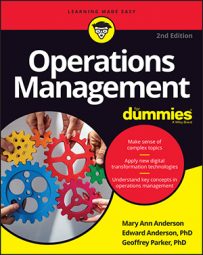The first and possibly most important risk management activity for an operations project is to brainstorm all the things that can go wrong. Do this during the planning phase — well before you begin actually executing the project. The most common tool for managing risk is a risk register.
To begin developing a risk register, consider the critical assumptions from the original project proposal that will harm the project if they are violated. Then put together a cross-functional team of experts and use the project proposal plus any other information your experts have at their disposal to brainstorm an initial list of risks.
Technology: If your project depends on any new technologies, whether these are information, engineering, or service technologies, these may pose significant risk to positive outcomes because they may not work, they may cost more than you expect, or they may take too long to complete. The likelihood of these risks occurring and their potential harm to the project increase if there are multiple technologies that depend on each other.
Financials: If the financial assumptions such as resource or material costs (or possibly cost of capital or inflation rates) are wrong, then core cost estimates for the overall project profitability might be off. For example, labor or important materials may cost more than you expect, which sets up the potential for going over-budget.
A different type of financial risk occurs if the project may end up late. Being late can create problems such as contract penalties or — in the case of product development — lost market share. Again, these impact profit assumptions. For international projects, another financial problem is the rate of currency exchange, which fluctuates continuously.
Market demand: If your project involves building a plant or developing a new product or service, the demand for your product may not be as strong as you originally predict. If demand is less than expected, then so too will revenue, again impacting the profitability of the project. Note that there is a bit of overlap with financial risks because late projects may result in less market share.
Organizational: The majority of organizational problems are the result of turnover. If there is somebody on your project who is irreplaceable, then establish a backup and a transition plan in case she leaves for greener pastures. Turnover happens, so be sure to plan for it.
Another organizational-based risk to some projects involves opposition to the project from inside a stakeholder organization. Hopefully, you identify roadblocks, or sources of opposition, during your stakeholder analysis process.
Government or legal: The government regulates many kinds of project from new drug development to building bridges. If permission from the government for a project activity is not forthcoming, great harm can be done to the project. For example, the great nightmare for people managing construction projects is running afoul of some government agency or organization or a legal restriction of some kind.
The number of projects derailed by environmental concerns is legion. One gas drilling project was delayed because the noise from it interfered with the breeding activities of gray whales 700 miles away.
The second greatest fear of people managing construction projects is upsetting some non-governmental lobby or pressure group, such as environmental advocacy groups, community activists and so on. For project managers in other industries, these problems are not so prevalent, but they are still a problem. For example, the laptop computer lithium battery fires of the early 2000s were a big problem for computer manufacturers.
Safety: No one wants workers to get injured on a project, but every major bridge that’s ever been built has had fatalities. Some industries are inherently less exposed to safety and health risks, but this is a primary area of concern for major construction and industrial projects.
That said, at least one videogaming software company was sued successfully by the spouses of their engineers and programmers for overwork-induced stress resulting in heart attacks and the like. (To be fair, said company was alleged to work their employees up to 100 hours per week.) So no project is entirely free of safety concerns.

